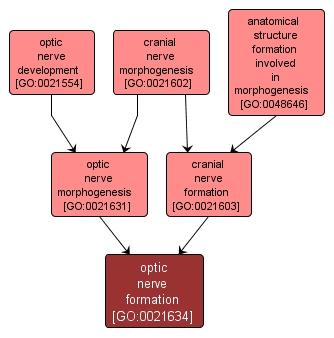| Desc: |
The process that gives rise to the optic nerve. This process pertains to the initial formation of a structure from unspecified parts. The sensory optic nerve originates from the bipolar cells of the retina and conducts visual information to the brainstem. The optic nerve exits the back of the eye in the orbit, enters the optic canal, and enters the central nervous system at the optic chiasm (crossing) where the nerve fibers become the optic tract just prior to entering the hindbrain. |














